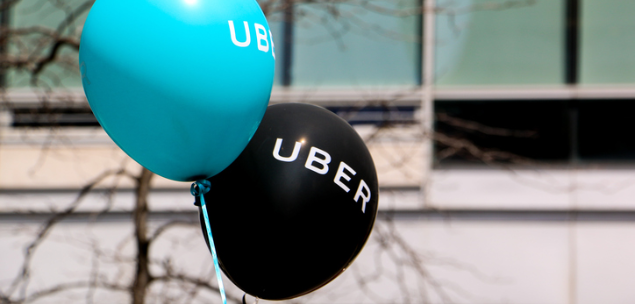Uber Technologies says growth in bookings for its ride-hailing and delivery services rose just six per cent in the latest quarter, the third quarter in a row that growth has remained in the single digits after double-digit growth for all of last year.
The San Francisco-based firm lost $US1.07 billion for the three months ending September 30, a 20 per cent increase from the previous quarter but down 27 per cent from a year ago, when the company posted its biggest publicly reported quarterly loss on the heels of the departure of Uber co-founder and former Chief Executive Travis Kalanick.
Uber is seeking to expand in freight hauling, food delivery and electric bikes and scooters as growth in its now decade-old ride-hailing business dwindles.
The company, valued at $US76 billion, faces pressure to show it can still grow enough to become profitable and satisfy investors in an initial public offering planned for some time next year.
Its adjusted loss before interest, taxes, depreciation and amortization was $US592 million, down from $US614 million last quarter and $US1.02 billion a year ago.
“We had another strong quarter for a business of our size and global scope,” said Nelson Chai, Uber’s chief financial officer, who joined in September after the job had been vacant for three years.
He emphasized the “high-potential markets in India and the Middle East where we continue to solidify our leadership position.”
Broader economic conditions and sustained losses could also push Uber to merge with rivals in India and the Middle East, particularly as Uber and India-based Ola share an investor in SoftBank Group Corp.
Uber’s gross bookings were $12.7 billion, up 6 per cent from the previous quarter and up 41 per cent from a year ago.
In late 2016, Uber’s quarterly bookings growth approached 30 per cent, and in early 2017 it still sustained double-digit growth quarter-over-quarter.
At the start of this year, however, bookings growth slid into the single digits.
As a private company, Uber is not required to publicly disclose financials, but last year started releasing selected figures.
Since chief executive Dara Khosrowshahi took the helm than a year ago, Uber has retreated from foreign markets where it had suffered heavy losses and shuttered certain pricey ventures including self-driving trucks.
But Khosrowshahi has plowed the savings back into its freight-hauling, food-delivery, and electric scooter and bikes businesses.
An investment by SoftBank that closed in January, which gave the Japanese investor a 15 per cent stake in Uber, included a provision that requires Uber to file for an IPO by September 30 of next year, or the company risks allowing restrictions on shareholder stock transfers to expire.
That could create a mess for Uber’s ownership structure and equity value, and pose regulatory problems.
Uber is considering moving its public debut up from the second half of 2019 to the first half, given concerns about a market downturn and an expected IPO from its chief US rival, Lyft Inc, according to sources familiar with the matter.
Khosrowshahi has focused on growing Uber Eats, which took in $US2.1 billion in booking revenue, marking a 150 per cent jump over last year and about 17 per cent of total bookings.
Uber has also pledged to double its investment over the next year in Freight, a brokerage service set up in May 2017 for truck drivers and fleet managers looking for cargo to haul.
The business is doubling the number of loads it connects with truckers every quarter, Uber said.
But it is not yet clear whether either business can sustain a profit.
It is also unclear how Uber will fare in a shakeout in the crowded global food-delivery industry, and whether its freight business will be widely adopted by fleet managers.
With AAP.

